Opinion & Analysis
Are titanium drivers really that much better than wood drivers?
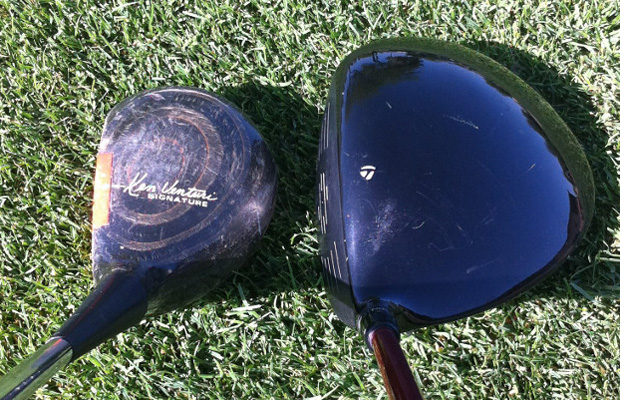
Let’s forget about center of gravity, moment of inertia, weight adjustability and turbulators for a moment. I know it’s difficult, but bear with me.
The golf industry has made significant (and I mean significant) improvements in driver technology in recent decades. I started playing golf with a wood driver and quickly found my way into the metal wood family, which was replaced by titanium shortly afterward. I hardly stopped to think about buying the newest technology, but it always seemed to help.
It made me wonder, how much better are titanium drivers of today than the wood drivers we played 30 and 40 years ago? If it’s starting to sound like I’m introducing results to an experiment, that’s because I am.
For my experiment, I dug out an old “wood” from the garage, along with my current driver and then tested them on a Trackman. To test the two against each other, I hit 10-to-15 shots with each driver, doing my best to create the same swing and launch conditions for both clubs, and let the numbers tell the story. I was a little afraid of hitting hard range balls with the wood driver, so for this test I dug into the shag bag and pulled out some old tournament golf balls.
There were a couple of major differences in the two clubs that affected performance. The wood driver was 43 inches long and built with a steel shaft. The shaft felt soft and whippy, and in my estimation, it was probably something close to a True Temper Dynamic Gold R300, maybe even softer.
My modern driver, a TaylorMade R9 SuperTri, which was built with a Fujikura Motore F1 75-gram S-Flex shaft, measured 44.5 inches.
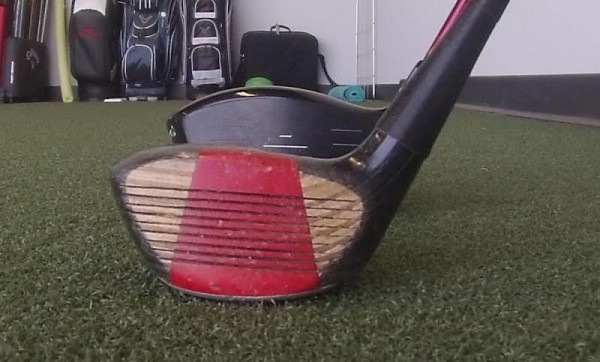
The two competitors meet at center-ring before the battle begins.
Below are my results to the experiment.
New School Driver
Illustrated in the images below, you can see both the dispersion and the averages for the group of drives I hit. My thought was to try to swing with the same speed on each shot, with the same golf balls, to identify the difference between the clubs.
New Driver Data: Avg. Launch Numbers, 10 Drives
Dispersion
Old School Driver
Old Driver Data: Avg. Launch Numbers, 10 Drives
Dispersion
Observations
The wood driver had a strong left bias which could have been the result of:
- The weak steel shaft, making the timing of the strike more difficult.
- More likely, it was the lack of bulge and roll on the face of the wood driver, making a center strike even more valuable.
You can see from the Trackman numbers of the wood driver that the face was pointed 0.2 degrees to the right of the target on average, with a swing path that was 4 degrees right. This path and face relationship should create a nice little draw, not a snap hook.
The modern driver’s average path and face numbers were only slightly different — path 2.5-degrees right and face 0.7-degrees right — yet the ball flights were markedly different. Modern drivers are built with a lot of bulge and roll to help the player in the case of an off-center hit. The point of impact on the driver face more important than any other factor, and it was even more important in the days of wood drivers!
I wasn’t overly concerned about the static loft of each driver because Trackman gives you dynamic loft, or the loft of the club at impact, which you can see was only slightly different between the two. The average dynamic loft for the wooden driver was 13.9 degrees at impact while the modern driver was 14.1 degrees. Their respective launch angles varied only slightly as well (0.5 degrees). I wanted these numbers to be as close as possible to show the difference in performance between the two clubs under similar circumstances.
Shot for Shot
I was able to get two swings with the exact same club head speed.
Old Driver
New Driver
Observations
There’s only a few differences in the individual shots, but they clearly have a tremendous impact on the flight of the golf ball. The angle of attack with the modern driver is about 3 degrees more “up” than the wooden driver and both dynamic loft and launch angle were higher for the wooden driver, even though I was hitting up less. The most likely explanation comes from center of gravity location, gear effect and the point of impact.
With path and face angle numbers being similar, you’d expect the curve of the ball to be similar. The tilt of the axis of the golf ball should be similar with a center strike on both clubs, but Trackman tells us this likely didn’t happen for either shot. Spin Axis is the amount of tilt in the axis of the golf ball at impact: a negative number means the left side of the golf ball tilts lower by degrees causing a right-to-left ball flight, while a positive number means the right side of the golf ball tilts lower by degrees causing left-to-right flight.
You can see the glaring difference in the spin axis number between the two shots; negative 8.0 and positive 1.5. That’s almost a 10-degrees difference. With the wood driver, the strike was more than likely to the toe side of the face and without a lot of bulge and roll, the result was a severe hook. With the modern driver, the strike was more than likely lower on the face and towards the heel, causing the ball to launch a little lower (gear effect), and the technology of the face (more gear effect) caused the ball to actually fade.
Conclusion and Thoughts
The wood driver, if you can find one, could be used as a great practice tool. The importance of the center strike is really valuable and using a smaller head with a higher degree of feedback (slices and hooks) can help you improve. However, by producing 20 yards more distance with a tighter dispersion, the new driver is difficult to argue against.
It’s eye-opening how driver design technology influences not only distance but the curve of golf shots. Bulge and roll, which aids in gear effect, works to hit the ball undeniably straighter and farther. So how much better is titanium than wood? Short answer – a lot.
The guys at sports science conducted a similar experiment with Rory McIlroy as their test dummy (he’s decent at golf). Watch the video here.
- LIKE65
- LEGIT21
- WOW9
- LOL9
- IDHT8
- FLOP11
- OB14
- SHANK16
Opinion & Analysis
The Wedge Guy: What really makes a wedge work? Part 1

Of all the clubs in our bags, wedges are almost always the simplest in construction and, therefore, the easiest to analyze what might make one work differently from another if you know what to look for.
Wedges are a lot less mysterious than drivers, of course, as the major brands are working with a lot of “pixie dust” inside these modern marvels. That’s carrying over more to irons now, with so many new models featuring internal multi-material technologies, and almost all of them having a “badge” or insert in the back to allow more complex graphics while hiding the actual distribution of mass.
But when it comes to wedges, most on the market today are still single pieces of molded steel, either cast or forged into that shape. So, if you look closely at where the mass is distributed, it’s pretty clear how that wedge is going to perform.
To start, because of their wider soles, the majority of the mass of almost any wedge is along the bottom third of the clubhead. So, the best wedge shots are always those hit between the 2nd and 5th grooves so that more mass is directly behind that impact. Elite tour professionals practice incessantly to learn to do that consistently, wearing out a spot about the size of a penny right there. If impact moves higher than that, the face is dramatically thinner, so smash factor is compromised significantly, which reduces the overall distance the ball will fly.
Every one of us, tour players included, knows that maddening shot that we feel a bit high on the face and it doesn’t go anywhere, it’s not your fault.
If your wedges show a wear pattern the size of a silver dollar, and centered above the 3rd or 4th groove, you are not getting anywhere near the same performance from shot to shot. Robot testing proves impact even two to three grooves higher in the face can cause distance loss of up to 35 to 55 feet with modern ‘tour design’ wedges.
In addition, as impact moves above the center of mass, the golf club principle of gear effect causes the ball to fly higher with less spin. Think of modern drivers for a minute. The “holy grail” of driving is high launch and low spin, and the driver engineers are pulling out all stops to get the mass as low in the clubhead as possible to optimize this combination.
Where is all the mass in your wedges? Low. So, disregarding the higher lofts, wedges “want” to launch the ball high with low spin – exactly the opposite of what good wedge play requires penetrating ball flight with high spin.
While almost all major brand wedges have begun putting a tiny bit more thickness in the top portion of the clubhead, conventional and modern ‘tour design’ wedges perform pretty much like they always have. Elite players learn to hit those crisp, spinny penetrating wedge shots by spending lots of practice time learning to consistently make contact low in the face.
So, what about grooves and face texture?
Grooves on any club can only do so much, and no one has any material advantage here. The USGA tightly defines what we manufacturers can do with grooves and face texture, and modern manufacturing techniques allow all of us to push those limits ever closer. And we all do. End of story.
Then there’s the topic of bounce and grinds, the most complex and confusing part of the wedge formula. Many top brands offer a complex array of sole configurations, all of them admittedly specialized to a particular kind of lie or turf conditions, and/or a particular divot pattern.
But if you don’t play the same turf all the time, and make the same size divot on every swing, how would you ever figure this out?
The only way is to take any wedge you are considering and play it a few rounds, hitting all the shots you face and observing the results. There’s simply no other way.
So, hopefully this will inspire a lively conversation in our comments section, and I’ll chime in to answer any questions you might have.
And next week, I’ll dive into the rest of the wedge formula. Yes, shafts, grips and specifications are essential, too.
- LIKE11
- LEGIT3
- WOW1
- LOL1
- IDHT2
- FLOP1
- OB1
- SHANK1
Golf's Perfect Imperfections
Golf’s Perfect Imperfections: Amazing Session with Performance Coach Savannah Meyer-Clement

In this week’s episode, we spent some time with performance coach Savannah Meyer-Clement who provides many useful insights that you’ll be able to implement on the golf course.
- LIKE0
- LEGIT0
- WOW0
- LOL0
- IDHT0
- FLOP0
- OB0
- SHANK0
19th Hole
Vincenzi’s 2024 RBC Heritage betting preview: Patrick Cantlay ready to get back inside winner’s circle

Just a two-hour drive from Augusta National, the PGA TOUR heads to Harbour Town Golf Links in Hilton Head Island, S.C. Hilton Head Island is a golfer’s paradise and Harbour Town is one of the most beautiful and scenic courses on the PGA TOUR.
Harbour Town Golf Links is a par-71 that measures 7,121 yards and features Bermuda grass greens. A Pete Dye design, the course is heavily tree lined and features small greens and many dog legs, protecting it from “bomb-and-gauge” type golfers.
The field is loaded this week with 69 golfers with no cut. Last year was quite possibly the best field in RBC Heritage history and the event this week is yet another designated event, meaning there is a $20 million prize pool.
Most of the big names on the PGA Tour will be in attendance this week with the exceptions of Hideki Matsuyama and Viktor Hovland. Additionally, Webb Simpson, Shane Lowry, Gary Woodland and Kevin Kisner have been granted sponsors exemptions.
Past Winners at Harbour Town
- 2023: Matt Fitzpatrick (-17)
- 2022: Jordan Spieth (-13)
- 2021: Stewart Cink (-19)
- 2020: Webb Simpson (-22)
- 2019: CT Pan (-12)
- 2018: Sotoshi Kodaira (-12)
- 2017: Wesley Bryan (-13)
- 2016: Branden Grace (-9)
- 2015: Jim Furyk (-18)
In this article and going forward, I’ll be using the Rabbit Hole by Betsperts Golf data engine to develop my custom model. If you want to build your own model or check out all of the detailed stats, you can sign up using promo code: MATTVIN for 25% off any subscription package (yearly is best value).
Key Stats For Harbour Town
Let’s take a look at key metrics for Harbour Town Golf Links to determine which golfers boast top marks in each category over their past 24 rounds.
Strokes Gained: Approach
Strokes Gained: Approach is exceedingly important this week. The greens at Harbour Town are about half the size of PGA TOUR average and feature the second-smallest greens on the tour. Typical of a Pete Dye design, golfers will pay the price for missed greens.
Total SG: Approach Over Past 24 Rounds
- Scottie Scheffler (+1.27)
- Tom Hoge (+1.27)
- Corey Conners (+1.16)
- Austin Eckroat (+0.95)
- Cameron Young (+0.93)
Good Drive %
The fairways at Harbour Town are tree lined and feature many dog legs. Bombers tend to struggle at the course because it forces layups and doesn’t allow long drivers to overpower it. Accuracy is far more important than power.
Good Drive % Over Past 24 Rounds
- Brice Garnett (88.8%)
- Shane Lowry (+87.2%)
- Akshay Bhatia (+86.0%)
- Si Woo Kim (+85.8%)
- Sepp Straka (+85.1%)
Strokes Gained: Total at Pete Dye Designs
Pete Dye specialists tend to play very well at Harbour Town. Si Woo Kim, Matt Kuchar, Jim Furyk and Webb Simpson are all Pete Dye specialists who have had great success here. It is likely we see some more specialists near the top of the leaderboard this week.
SG: TOT Pete Dye per round over past 36 rounds:
- Xander Schauffele (+2.27)
- Scottie Scheffler (+2.24)
- Ludvig Aberg (+2.11)
- Brian Harman (+1.89)
- Sungjae Im (+1.58)
4. Strokes Gained: Short Game (Bermuda)
Strokes Gained: Short Game factors in both around the green and putting. With many green-side bunkers and tricky green complexes, both statistics will be important. Past winners — such as Jim Furyk, Wes Bryan and Webb Simpson — highlight how crucial the short game skill set is around Harbour Town.
SG: SG Over Past 24 Rounds
- Jordan Spieth (+1.11)
- Taylor Moore (+1.02)
- Wyndham Clark (+0.98)
- Mackenzie Hughes (+0.86)
- Andrew Putnam (+0.83)
5. Greens in Regulation %
The recipe for success at Harbour Town Golf Links is hitting fairways and greens. Missing either will prove to be consequential — golfers must be in total control of the ball to win.
Greens in Regulation % over past 24 rounds:
- Brice Garnett (+75.0%)
- Scottie Scheffler (+69.9%)
- Corey Conners (+69.0%)
- Shane Lowry (+68.3%)
- Patrick Rodgers (+67.6%)
6. Course History
Harbour Town is a course where players who have strong past results at the course always tend to pop up.
Course History over past 24 rounds:
- Patrick Cantlay (+2.34)
- Cam Davis (+2.05)
- J.T. Poston (+1.69)
- Justin Rose (+1.68)
- Tommy Fleetwood (+1.59)
The RBC Heritage Model Rankings
Below, I’ve compiled overall model rankings using a combination of the five key statistical categories previously discussed — SG: Approach (24%), Good Drives (20%), SG: SG (14%), SG: Pete Dye (14%), GIR (14%), and Course History (14%)
- Shane Lowry
- Russell Henley
- Scottie Scheffler
- Xander Schauffele
- Corey Conners
- Wyndham Clark
- Christiaan Bezuidenhout
- Matt Fitzpatrick
- Cameron Young
- Ludvig Aberg
2024 RBC Heritage Picks
Patrick Cantlay +2000 (FanDuel)
With the exception of Scottie Scheffler, the PGA Tour has yet to have any of their star players show peak form during the 2024 season. Last week, Patrick Cantlay, who I believe is a top-5 players on the PGA Tour, took one step closer to regaining the form that’s helped him win eight events on Tour since 2017.
Cantlay limped into the Masters in poor form, but figured it out at Augusta National, finishing in a tie for 20th and ranking 17th for the week in Strokes Gained: Ball Striking. The former FedEx Cup champion will now head to one of his favorite golf courses in Harbour Town, where he’s had immaculate results over the years. In his six trips to the course, he’s only finished worse than 7th one time. The other finishes include three third places (2017, 2019, 2023) and one runner-up finish (2022). In his past 36 rounds at Harbour Town, Cantlay ranks 1st in Strokes Gained: Total per round at the course by a wide margin (+2.36).
Cantlay is winless since the 2022 BMW Championship, which is far too long for a player of his caliber. With signs pointing to the 32-year-old returning to form, a “signature event” at Harbour Town is just what he needs to get back on the winning track.
Tommy Fleetwood +3000 (FanDuel)
I truly believe Tommy Fleetwood will figure out a way to win on American soil in 2024. It’s certainly been a bugaboo for him throughout his career, but he is simply too talented to go another season without winning a PGA Tour event.
At last week’s Masters Tournament, Fleetwood made a Sunday charge and ended up finishing T3 in the event, which was his best ever finish at The Masters. For the week, the Englishman ranked 8th in the field in Strokes Gained: Approach, 10th in Strokes Gained: Ball Striking and 16th in Strokes Gained: Putting.
Harbour Town is a perfect layout for Fleetwood, and he’s had relative success at this Pete Dye design in the past. In his four trips to the course, he’s finished inside of the top 25 three times, with his best finish, T10, coming in 2022. The course is pretty short and can’t be overpowered, which gives an advantage to more accurate players such as Fleetwood. Tommy ranks 8th in the field in Good Drive % and should be able to plot his way along this golf course.
The win is coming for Tommy lad. I believe there’s a chance this treasure of a golf course may be the perfect one for him to finally break through on Tour.
Cameron Young +3300 (FanDuel)
Cameron Young had a solid Masters Tournament last week, which is exactly what I’m looking for in players who I anticipate playing well this week at the RBC Heritage. He finished in a tie for 9th, but never felt the pressure of contending in the event. For the week, Young ranked 6th in Strokes Gained: Off the Tee and 6th in Strokes Gained: Ball Striking.
Despite being one of the longest players off the tee on the PGA Tour, Young has actually played some really good golf on shorter tracks. He finished T3 at Harbour Town in 2023 and ranks 20th in the field in Good Drive% and 16th in Greens in Regulation in his past 24 rounds. He also has strong finishes at other shorter courses that can take driver out of a players hand such as Copperhead and PGA National.
Young is simply one of the best players on the PGA Tour in 2024, and I strongly believe has what it takes to win a PGA Tour event in the very near future.
Corey Conners +5500 (FanDuel)
Corey Conners has had a disappointing year thus far on the PGA Tour, but absolutely loves Harbour Town.
At last week’s Masters Tournament, the Canadian finished T30 but ranked 20th in the field in Strokes Gained: Approach. In his past 24 rounds, Conners ranks 3rd in the field in Strokes Gained: Approach, 3rd in Greens in Regulation % and 24th in Good Drive %.
In Conners’ last four trips to Harbour Town, his worst finish was T31, last season. He finished T4 in 2021, T12 in 2022 and ranks 8th in Strokes Gained: Total at the course over his past 36 rounds.
Conners hasn’t been contending, but his recent finishes have been encouraging as he has finished in the top-25 in each of his past three starts prior to The Masters, including an impressive T13 at The PLAYERS. His recent improvement in ball striking as well as his suitability for Harbour Town makes Conners a high upside bet this week.
Shane Lowry (+7500) (FanDuel)
When these odds were posted after Lowry was announced in the field, I have to admit I was pretty stunned. Despite not offering much win equity on the PGA Tour over the last handful of years, Shane Lowry is still a top caliber player who has the ability to rise to the top of a signature event.
Lowry struggled to score at The Masters last week, but he actually hit the ball really well. The Irishman ranked 1st for Strokes Gained: Approach on the week and 7th in Strokes Gained: Ball Striking. As usual, it was the putter that let him down, as he ranked 60th in the field in Strokes Gained: Putting.
Harbour Town is most definitely one of Lowry’s favorite courses on the PGA Tour. In his six starts there, he’s finished in the top 10 three times, including third twice. Lowry is sensational at Pete Dye designs and ranks 7th in Strokes Gained: Total in his past 36 rounds on Dye tracks.
Lowry is perfect for Harbour Town. In his past 24 rounds, he ranks 5th in Strokes Gained: Approach, 2nd in Good Drive% and 5th in Green in Regulation %. If he figures it out on the greens, Shane could have his first win in America since 2015.
Lucas Glover +12000 (FanDuel)
This is one of my weekly “bet the number” plays as I strongly believe the odds are just too long for a player of Glover’s caliber. The odds have been too long on Glover for a few weeks now, but this is the first event that I can get behind the veteran being able to actually contend at.
Glover is quietly playing good golf and returning to the form he had after the understandable regression after his two massive victories at the end of 2023. He finished T20 at The Masters, which was his best ever finish at Augusta National. For the week, Lucas ranked 18th for Strokes Gained: Approach and 20th in Strokes Gained: Ball Striking.
Over his past 24 rounds, Glover ranks 9th in Strokes Gained: Approach and 13th in Good Drive %. Harbour Town is a short course that the 44-year-old will be able to keep up with the top players on Tour off the tee. He’s played the course more than 20 times, with mixed results. His best finishes at Harbour Town include a T7 in 2008, but recently has a finish of T21 in 2020.
Glover has proven he can contend with the stars of the Tour on any given week, and this number is flat out disrespectful.
- LIKE30
- LEGIT5
- WOW2
- LOL1
- IDHT1
- FLOP2
- OB0
- SHANK2
-

 19th Hole1 week ago
19th Hole1 week agoDave Portnoy places monstrous outright bet for the 2024 Masters
-

 19th Hole2 weeks ago
19th Hole2 weeks agoThings got heated at the Houston Open between Tony Finau and Alejandro Tosti. Here’s why
-

 19th Hole1 week ago
19th Hole1 week agoTiger Woods arrives at 2024 Masters equipped with a putter that may surprise you
-

 19th Hole2 weeks ago
19th Hole2 weeks agoReport: Tiger Woods has ‘eliminated sex’ in preparation for the 2024 Masters
-

 19th Hole4 days ago
19th Hole4 days agoTwo star names reportedly blanked Jon Rahm all week at the Masters
-

 19th Hole3 days ago
19th Hole3 days agoNeal Shipley presser ends in awkward fashion after reporter claims Tiger handed him note on 8th fairway
-

 19th Hole2 days ago
19th Hole2 days agoReport: LIV Golf identifies latest star name they hope to sign to breakaway tour
-

 19th Hole2 weeks ago
19th Hole2 weeks agoAddiction, spinal fusion, and scam artists – Everything Anthony Kim revealed in candid interview with David Feherty

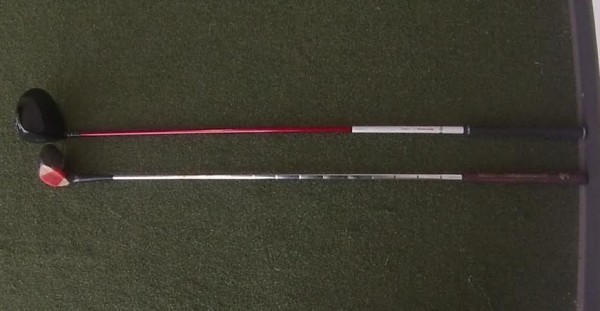
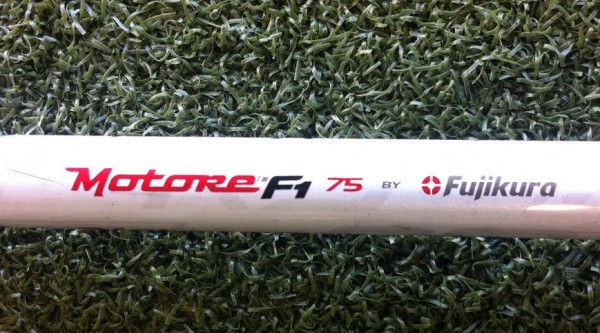
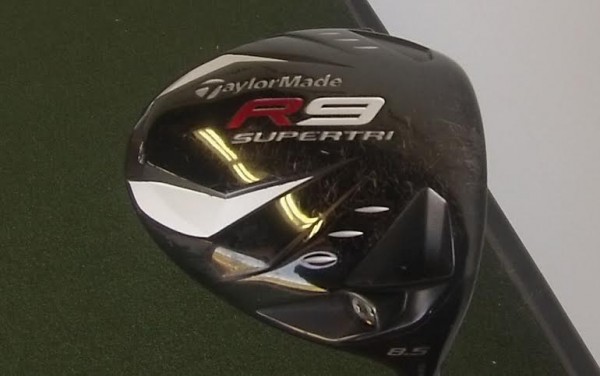

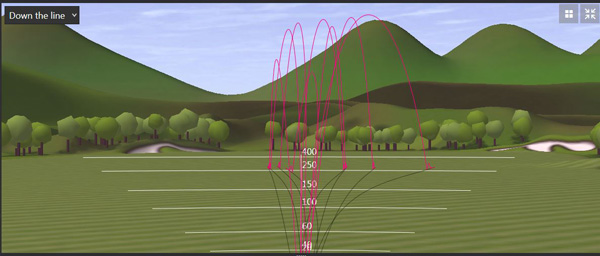
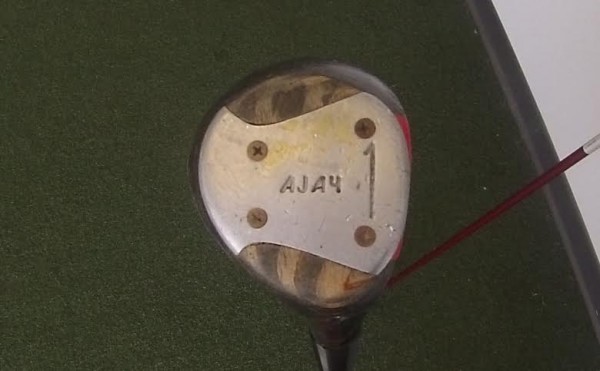

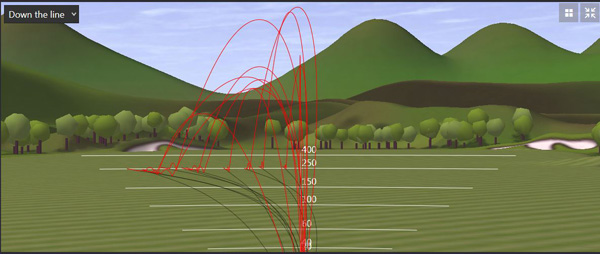
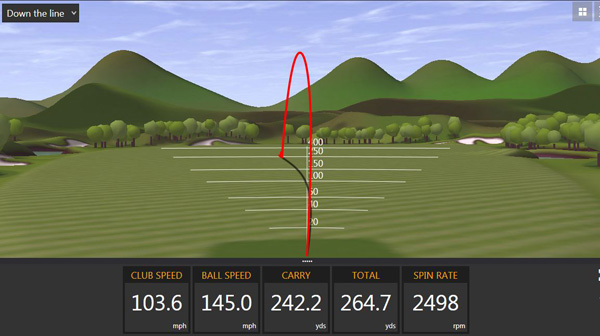
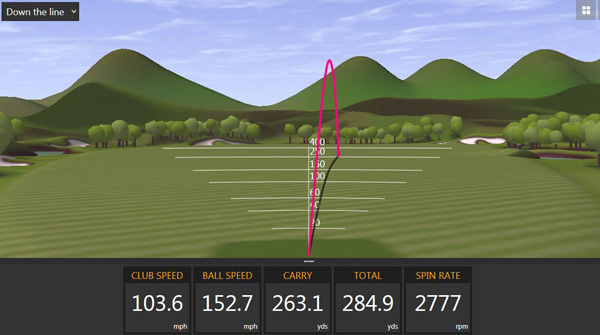















Mike
Mar 10, 2019 at 1:58 pm
I grew up playing in the late 80’s and used OLD technology. I shot in the mid 70’s in high school in the early 80’s with an old persimmon 3 wood and tiny little Wilson blades, and one JP copper 55* sand wedge, such a raw, simple setup. I am an athlete and picked up golf fast, and again, in state tournaments in my Sophopmore and Junior years, I shot 77 and 76.
Fast forward to today w/ all the best equipment, I struggle to break 80. I can bomb a modern driver out past 280 yards, but do I know where it’s going? Nope. I scored better slapping a persimmon 3 wood out there at about 240 in high school, BUT IN PLAY, then hit great iron shots and got up and down all day long…
So I went back to a persimmon driver last summer for a try, I’ll be darned. Macgregor S300 shaft, goes straighter than modern drivers, goes lower, DOES NOT go as far, but I am just better off the tee w/ it. It may stay in my bag this season, I’ll check back.
Mike
Mar 10, 2019 at 2:00 pm
***sorry, high school in early 90’s***
Adam
Apr 29, 2017 at 7:18 pm
I’ve been hitting with a Persimmon Auld classic that looked brand new when I bought it, not a mark on it and still glossy. Tested it against Callaway x2hot and XR16. All extra stiff shafts, 10.5° and I see almost no difference in distance, but the wood goes straighter. Longest drive was with the wood BTW. Wood sounds better and I hardly feel the impact. Plus using the wood I felt was more impressive to onlookers “is that a wooden driver” “wow nice hit” I heard people say. Takes better dexterity, but this club won’t crack or go flat.
Eric Cavanagh
Aug 17, 2015 at 1:34 pm
Remember the object of driving is to land the ball before the tee,never after it,so a 310 Yd shot blasted down the fairway that hangs up in the air for a great while isn’t wining or proper. It’s much easier to aim the ball with a wood. Metal drivers are lighter and so must drive farther than wood always,but when a ball hangs up in the air for 30 sec. longer than it does with the wood,you need to compensate to keep it landing in front of the pin. I would say,play with wood and I wish companies would make real wood drivers with graphite shafts so you get a fast sweep like you do with your titanium Hogan but the solid accuracy and slightly less loft that you do with those very,very pretty woods. a $1 wood,with a beat-up face will never be entirely consistent,though,that’s why the manufacturers need to begin making them with a graphite shaft. I talked to some folks to bring back some extinct trees and the one I think would be the best to use to make these new-generation woods is Shittem wood mentioned in the Bible in Exodus and maybe in other books of the Bible.
esc
Brendan
Aug 2, 2014 at 8:29 pm
Hi Rob
I have an old persimmon (I’m old enough to know the difference from laminate!) at mum & dad’s that I use when back in town and love it. I love the feel of a well hit drive, I love the fact that there are actual screws to hit it off and if only I was wearing metal spikes while striding across concrete, it’d *sound* like golf when I was a kid….
I think what you are missing from the trackman data is what trackman always lacks – how does it make you score? Forget trying to get comparable swing speeds and launch angles – go out with two new balls and play head to head to score. Does the 20m difference make an actual distance to scoring? Does the ability to manipulate the ball more easily with a wood have some advantages? In some circumstances, does the lower trajectory actually become a benefit (eg wind)? Do you swing more smoothly with the little head and the shorter shaft? Do you try to take on hero carries, or aim for the middle of the fairway? I find that I often hit more fairways with my wood than I do with my regular driver. And remember, off a good lie, a wooden driver can also be used as a fairway wood.
I’m a big fan and not convinced that I necessarily *score* all that much differently. I’m not sure I’d play persimmon in a head to head match for money, but if you want to spot me a couple of shots because I’m playing with grandpa’s driver – you’re on!
Cheers,
BT
DaveMikulec
Feb 27, 2016 at 12:48 pm
I recently decided to get back into the game and scouted a local thrift shop that had several (real) woods stuck in a barrel, priced at $8 for all of them. All are persimmon and were crafted at Louisville Golf, and they still look new. I can’t wait to try them out.
Don
Jul 17, 2014 at 7:26 pm
Hi Son nice to see that you’ve got the golfers attention. some real food for thought. A similar comparison, who’s a better player Tiger or Jack, different times and different technology. Dad
Morgan
Jul 16, 2014 at 8:38 pm
I love these fun tests done just for the heck of it and usually on the spur of the moment. I had one such moment when I played in an electricians golf day. One of the guys had a really old set with one of those cast aluminium (so it looked like)small headed 1 wood’s. He obviously wasn’t a golfer and was out for a good day. Anyway after 6 holes we were giving him hell about his gear, but I got this bug in my head to want to hit it, so tee it up I did. The metal shaft was rusty and the head very small and dull and even had paint splatter on it. I’ld already hit mine down the fairway and with assurance I would give him a newish driver after the game I gave his the perfect strike. Off it went perfect trajectory down the fairway, the boys go that’s sweet and hang crap on clubs owner as he is defiantly the cause of all his bad drives, got up there both center of the fairway laser-ed his 245m, laser-ed mine 262m. Totally stunned. I could find his club at a second hand shop and buy it for $10, mine was a SLDR @7* with a GD DI6 X FLEX AND COST A HELL OF A LOT MORE. My walk away comment to the clubs owner was “get lessons, nothing wrong with the club” which bought him more heckling from the group and left a very satisfied smile on my face, but bewilderment at why only that much gain over what must be 30+ yrs of golf club and shaft advancement and millions spent in research. Note; I do realize most of the advancement would be seen in dispersion and contact consistency if I had of hit a heap of balls but still with all the new clubs that have come out and people on this site and Golf companies claiming gains of 5 – 20m with their new wonder driver and $1000.00 shafts ( 30yrs x 10 new drivers x 10 more meters ) the newer club should be at least 100m ahead and 150m ahead at least with a persimmon or laminated head. Any way sorry for the long story but it was one of my all time golf feel good moments, smiling now.
Rob Rashell
Jul 17, 2014 at 10:52 am
Morgan,
Great story!My guess would be we’ve reached a bit of a plateau with technology, tough to squeeze much more out of club heads, shafts, balls, etc. I remember playing a practice round my year on tour with a PGA Tour veteran and major champion, he was playing with irons that were 20 years old. He knew how far they went, down to the yard, and didn’t care about anything else. Technology and optimizing are a different endeavor than playing and scoring, as it should be.
All the best!
Rob
James
Jul 29, 2014 at 1:25 pm
you dont think 20 yards difference is a big deal???
t
Jul 15, 2014 at 5:43 pm
My point is…in the 80s, a good long golf course was 6800. and a good tee shot was 250 yards. today, s good long golf course is 7300+ with a good tee shot being 290+. excluding inflation, we are making ourselves pay more money to play a very simple game. dumb dumb dumb. i don’t need to pay $500 for a driver to play a 7300 yard course when i could pay less than $200 for a driver and play a 6800 yard course. and the greens fees are jacked up to pay for the extra distance. doesnt make sense to me.
James
Jul 15, 2014 at 2:16 pm
I would add, I wouldn’t expect the wood driver to perform as well as the modern one in terms of distance because the modern one has more COR. Did the choice of ball make a difference too? I wouldn’t use a range ball but a Pro V1 is softer than the old 90 compression wound balls hit with wood. That, to me, would be more meaningful of a test using the modern ball, same exact shaft, same exact loft of club.
Justin
Aug 18, 2014 at 12:19 am
The COR, when mixed with your higher clubhead speed, also factors in. You need a higher (>95mph) swing to really activate the COR.
I like the attempt, but they probably should be closer to one another, spec-wise, to get any real data out of it. An analogy (to me) would be: testing a well-fit Brand X club to a not-so-well-fit Brand Y club. Of course, Brand X will have better results, but that doesn’t make Brand Y a bad choice, either…
Sorry, but came to this party late and felt the need to add my $.02. I expect change back lol!
James
Jul 15, 2014 at 2:13 pm
I too think this is a bad test because the shafts are not equivalent and that makes a big difference. What would the same shaft that is in your modern driver in terms of smash factor and ball speed? Are the lofts of the two clubs identical? The dynamic loft doesn’t mean much and here is why. I can take a 9 degree driver and tee it up high, play it forward and get a higher launch than I would normally. By the same token you can take a higher lofted driver and play it back to launch it lower. Unless the lofts and shafts are exactly the same the test is sort of useless. The shaft transmits the power from the body to the club and those two shafts are no where near functionally equivalent.
Rob Rashell
Jul 15, 2014 at 3:55 pm
James,
Thanks for the thoughts. My idea originally was to get a shot with each driver that had the same club head speed, same dynamic loft, and same launch angle to see how the heads performed. With the individual shots I got pretty close.
I agree lots of factors to take into account.
Rob
MHendon
Jul 16, 2014 at 1:56 am
It’s not a bad test. It’s a comparison between old equipment and new. If they’d had 45 inch light weight graphite shafts in the day of persimmon woods I’m sure they would have used them. That’s the whole point of this test, you’re not comparing apples to apples here.
James
Jul 16, 2014 at 8:14 am
Yeah but then the courses weren’t playing 500 yard plus par 4s in majors either. The courses were laid out to play for the equipment at hand. If you really wanted to know how wood compares to now then you do need to have everything the same except for the clubhead. In that case, metal would still win out because the COR is .83 and wood is like .78
MHendon
Jul 17, 2014 at 4:25 pm
Yeah I still don’t understand your argument. Yes everyone knows courses have been lengthened because of modern equipment. Again this was simply a comparison between old an new, what was available 30 years ago and now.
Brian S
Jul 15, 2014 at 11:27 am
Seemed to have glossed over the difference in shaft length. My guess is that 1.5″ could be a 10-20 yard difference. And, depending on how you measured, given the size of head on the modern driver, you distance from the end of the shaft to the sweet spot on each club will vary.
As someone mentioned earlier, maybe a better comparison would be a modern 3w, given they would be more similar on overall club length.
I have actually had different results than yours. I don’t have access to Trackman. But, from watching ball flight, I have far more spin with the modern driver versus my old wooden driver. My rollout on the old wooden drivers gives me roughly the same distance when doing my own comparison.
Good article though, nice to see what technology has really given us (or maybe not given us) over the past couple of decades.
Rob Rashell
Jul 15, 2014 at 11:47 am
Brian,
I think a rough guess with length of club would be 1 inch of shaft length equals roughly two mph, each mph of club speed equals just short of 3 yards. So 1.5″ x 2 equals 3 mph, 3 mph x 3 yards = roughly nine yards difference. This would be my best guess.
The difficulty with a three wood would be the difference in dynamic loft or, loft of the club at impact, between 3 wood and wooden driver.
Super fun to use Trackman to turn back the clocks a bit, thanks for the comment!
Rob
Chris Wycoff
Jul 15, 2014 at 10:43 am
We’ve got a couple persimmons with screws sitting around the shop and we’ve done this experiment a few times for fun. Our results have been very close to what Rob found.
On a perfectly hit shot, the our old wood drivers can get pretty close to the distance of today’s modern drivers – maybe 5-10 yards. It’s in the average distances and dispersion where we’ve seen a big difference – probably 20-30 yards shorter on average because the less than perfect shots with persimmon really hurt the averages.
Fun article!
Rob Rashell
Jul 15, 2014 at 10:58 am
Chris,
How great is the feel of those old drivers though? So soft!
Rob
Chris Wycoff
Jul 15, 2014 at 4:59 pm
They do feel amazing when, and for me, if you hit it perfect. If not, watch out!
John
Jul 15, 2014 at 11:48 am
Agree with you Chris. It’s the misses that get you with persimmon. I play my old late 80’s persimmon from time to time, and when I nail one, especially in the summer with dry conditions the distance can be amazingly competitive with titanium. On the other hand, when I catch one squirrelly, well, it certainly does adversely effect one’s distance. You cam move the ball around with persimmon in a way that’s fun, and much harder to do with a big headed driver, and overall with the shorter steel shaft finding fairways is easier than a 46″modern driver. However, if one is fitted and sensible about the desire to hit the ball long AND straight, as opposed to just long, (say a 44″ modern driver) then the advantages are obvious.
All due respect to Rob, his test would a bit more legit using a well designed Macgregor or Penna or a Joe Powell instead of the K Mart special he was using.
Ed Ranfelt
Jul 15, 2014 at 10:29 am
With apologies….
Another error, persimmon and laminated maple drivers have bulge and roll. It’s not as apparent visually, because of the smaller clubhead size, but it IS present.
Bulge works with the gear effect on lateral mishits, producing shots that start left or right, and curve to the center.
Rob Rashell
Jul 15, 2014 at 10:56 am
Ed,
Thanks for the comment, do you know how to tell the difference between persimmon and laminated maple? Just curious. Also curious if modern club makers have ever thought about reducing bulge and roll on modern drivers to help better players curve the ball more? Some times the curve is good.
Thanks
Rob
Ed Ranfelt
Jul 16, 2014 at 10:43 pm
With apologies if this was answered by someone else (I’ve not read all comments)
As it happens, I do know how to tell the difference. Or at least what is perceived as the classic tell.
In the picture of the laminate driver clubface you have accompanying the article, you’ll see alternating “stripes” across the face. That’s the sign of a laminate; they’re made by literally taking strips of maple wood and gluing them together, before they’re cut to shape.
Persimmons are made from solid blocks of wood, and lack these “stripes.”
As for bulge, some have suggested that *some* modern drivers might need MORE bulge. We’ve all seen the classic toe hook or heel fade; all too frequently, these start out online and scream one direction or the other. In the case of a persimmon or laminate driver, they tend to start out more to the left or right, before coming back to the fairway.
Current roll is fine, though some like Tom Wishon have done away with roll below the center of the face. Above the center of the face, the roll assists with the vertical gear effect, helping to provide lower spin, to go with the slightly higher launch you get from hitting above center of the face.
Sorry for the length of this. 🙂
Rob Rashell
Jul 17, 2014 at 10:53 am
Thanks Ed, love the info!
pingmatt
Jul 15, 2014 at 9:43 am
What type of ball was used in testing? Advances in the modern golf ball were made with modern drivers in mind, not old school woods. How would the results be different if you used a balata with each club?
Rob Rashell
Jul 15, 2014 at 9:47 am
Ping,
I used pro v1’s, would love to get my hands on a couple dozen maxfli ddh or titleist balata golf balls, would be fun. Check out the video at the end of the post, good insight into the golf balls as well.
Rob
Chris
Jul 15, 2014 at 9:23 am
Nice experiment! My question would be: How far do you hit your modern 43″ fairway wood? How would that stack up against the old driver?
Rob Rashell
Jul 15, 2014 at 9:50 am
Chris,
Good question, my guess the 3 wood would probably go a bit farther. Better shaft, better head, the feel of those wooden drivers sure is great though.
Rob
Nice
Jul 15, 2014 at 3:13 am
Did you tee the ball up at the same height????? Because that would also affect how it takes off, obviously…… thus, with the old driver, being lower on the tee, means you hit down on it more, and conversely, with the giant-headed driver of the modern day, to tee it that low would not make it as efficient.
Also, in this instance, the wood driver illustrated here does not have any screws in the face, and far too many deep grooves. I would like to see this experiment done with a persimmon driver with screws in the face with a smooth surface.
But thank you for the experiment! Very nicely done.
Rob Rashell
Jul 15, 2014 at 9:58 am
Nice,
Would love to get my hands on a persimmon driver with screws, if I do, I’ll put together part two of this experiment. Tough to find those things.
Rob
Pingback: Are titanium drivers really that much better than wood drivers? | Spacetimeandi.com
Grant
Jul 14, 2014 at 10:00 pm
Quite literally used to have to hit on the screws. The inserts were just a bit larger than the balatas of the day. Lot of penna and MacGregor drivers in the basement. Still have to hit the center for predictable results. Roll and bulge were easily altered back then. Would not go back if I could.
Rob Rashell
Jul 15, 2014 at 10:02 am
Grant,
If you’re in the Phoenix area let me know, would be fun to test the old drivers and fairway woods. Also love the feel of hitting them.
Rob
LaMont
Jul 15, 2014 at 6:49 pm
Rob,
I am in the Phoenix area and mill custom putters out of the Hot Stix Scottsdale location. Contact me via email if you would be interested in using some of the best persimmon woods to go head to head against that TM. I have a driver that was the Rolls Royce of persimmons, shafted with what was the top of the line graphite at the time it was crafted. It was made right here in Tempe and was about fifteen years too late to be an amazing piece of golf equipment.
I think that part of the issue with this test is that you had two clubs that were incredibly far apart in quality, even when they were new. The Ajay driver was junk, at best. TM makes nice drivers that are engineered for distance and they do a good job of it.
I would love to see this same test played out, using the best from back then, against the best of today. I don’t believe that persimmon will win in distance, but as mentioned, there is nothing better than the feeling of catching one right on the screws and watching that piercing ball flight.
Contact me, this sounds like fun.
LaMont
Rob Rashell
Jul 15, 2014 at 10:24 pm
Lamont,
[email protected] shoot me an email, we’ll sort out the details, love the technology old and new, and smashing them together.
DBD
Jul 14, 2014 at 9:06 pm
the picture shows a laminated driver – typically maple, not a persimmon driver
Greg
Jul 14, 2014 at 9:10 pm
DBD is totally correct but to be fair, there wasn’t any real distance difference between persimmon and laminated maple.
Zak Kozuchowski
Jul 14, 2014 at 9:19 pm
This is what happens when young people are allowed to write and edit stories about old golf clubs. We’ve made the corrections.
Double Mocha Man
Jul 14, 2014 at 11:06 pm
Put that to Trackman… persimmon vs. laminated maple.
Rob Rashell
Jul 15, 2014 at 10:00 am
DBD,
Thanks for the feedback, had no idea the driver was not persimmon, but maple. How can you tell? Specific things you look for? Thanks for the information!
Rob
Double Mocha Man
Jul 15, 2014 at 1:48 pm
Laminated maple looks like a small version of plywood. Persimmon is solid with tiny, almost imperceptible, little specs.